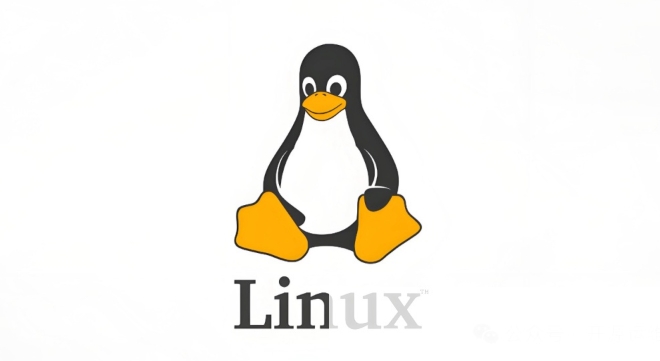Check file and directory permissions using ls -l and fix with chmod if necessary; 2. Verify file ownership and use sudo chown or usermod to correct it; 3. Use sudo only when needed for system-level access; 4. Check for read-only filesystems with mount and remount as read-write if required; 5. Inspect ACLs with getfacl and immutable flags with lsattr, then adjust with chattr if needed; 6. Apply specific fixes for common scenarios like adding execute bits or changing ownership, and always prioritize secure, targeted solutions over broad sudo use to maintain system security.

When you encounter a "Permission Denied" error in Linux, it usually means your user account doesn’t have the necessary permissions to access or modify a file, directory, or execute a command. While this can be frustrating, understanding the root causes and how to fix them is key to working efficiently in Linux. Here’s a practical guide to troubleshooting these errors.

1. Check File and Directory Permissions
The most common cause of "Permission Denied" is incorrect file or directory permissions. Use ls -l to inspect them:
ls -l /path/to/file
Output example:

-rw-r--r-- 1 user group 1024 Apr 5 10:00 myfile.txt
- The first part (
-rw-r--r--) shows permissions:- Owner:
rw-(read/write) - Group:
r--(read only) - Others:
r--(read only)
- Owner:
- If you're trying to write or execute but don’t have the right, that’s your issue.
Fix:
- To add execute permission:
chmod x script.sh
- To give owner write permission:
chmod u w file.txt
?? Be cautious with
chmod 777— it gives full access to everyone and is a security risk.
2. Verify Ownership of the File
Even with correct permissions, if you’re not the owner or not in the right group, you may be denied access.
Use ls -l to check ownership:
ls -l /path/to/file
If the file is owned by root and you're a regular user, you won’t be able to modify it without elevated privileges.
Fix:
- Change ownership (requires root):
sudo chown youruser:yourgroup filename
- Or, add your user to the required group:
sudo usermod -aG groupname username
Then log out and back in for changes to apply.
3. Use sudo When Appropriate (But Wisely)
If you're trying to edit system files or access restricted directories (like /etc, /var/log, or /root), you’ll need elevated privileges.
Example:
sudo nano /etc/hostname
But avoid using sudo for personal files — it can create ownership issues later.
? Don’t do:
sudo ./myscript.shjust because it fails — check permissions first.
4. Check for Read-Only Filesystems or Mount Options
Sometimes the filesystem itself is mounted as read-only, especially after a crash or with certain external drives.
Check mount status:
mount | grep "your_partition"
Look for ro (read-only) instead of rw (read-write).
Fix: Remount as read-write:
sudo mount -o remount,rw /dev/sdX /mount/point
Or check /etc/fstab for incorrect mount options.
5. Watch Out for Special Permissions (ACLs and Immutable Flags)
Advanced Linux systems may use Access Control Lists (ACLs) or immutable attributes that override standard permissions.
- Check for ACLs:
getfacl filename
- Check for immutable flag:
lsattr filename
If you see an
i, the file is immutable.
Fix:
- Remove immutable flag:
sudo chattr -i filename
This is often used to protect critical system files — only disable it if you’re sure.
6. Common Scenarios and Quick Fixes
Scenario Likely Cause Solution Can't run a script Missing execute bit chmod x script.shCan't save in /var/wwwOwned by root sudo chown -R $USER:$USER /var/www/htmlCan't access external drive Mounted read-only Remount with rwEditor says "Permission denied" on save File owned by root Use sudo, or change ownership
Final Tips
- Always prefer adjusting ownership or permissions over using
sudounnecessarily. - Use
idto check your user and group memberships. - Test changes with a non-critical file first.
- Audit logs (
/var/log/auth.log) can help trace permission issues in multi-user systems.
Basically, "Permission Denied" is Linux doing its job — keeping things secure. Most of the time, it's a quick
chmodorchownaway from being resolved.The above is the detailed content of Troubleshooting 'Permission Denied' Errors in Linux. For more information, please follow other related articles on the PHP Chinese website!
- Always prefer adjusting ownership or permissions over using

Hot AI Tools

Undress AI Tool
Undress images for free

Undresser.AI Undress
AI-powered app for creating realistic nude photos

AI Clothes Remover
Online AI tool for removing clothes from photos.

Clothoff.io
AI clothes remover

Video Face Swap
Swap faces in any video effortlessly with our completely free AI face swap tool!

Hot Article

Hot Tools

Notepad++7.3.1
Easy-to-use and free code editor

SublimeText3 Chinese version
Chinese version, very easy to use

Zend Studio 13.0.1
Powerful PHP integrated development environment

Dreamweaver CS6
Visual web development tools

SublimeText3 Mac version
God-level code editing software (SublimeText3)

Hot Topics
 Install LXC (Linux Containers) in RHEL, Rocky & AlmaLinux
Jul 05, 2025 am 09:25 AM
Install LXC (Linux Containers) in RHEL, Rocky & AlmaLinux
Jul 05, 2025 am 09:25 AM
LXD is described as the next-generation container and virtual machine manager that offers an immersive for Linux systems running inside containers or as virtual machines. It provides images for an inordinate number of Linux distributions with support
 How to create a self-signed SSL certificate using OpenSSL?
Jul 03, 2025 am 12:30 AM
How to create a self-signed SSL certificate using OpenSSL?
Jul 03, 2025 am 12:30 AM
The key steps for creating a self-signed SSL certificate are as follows: 1. Generate the private key, use the command opensslgenrsa-outselfsigned.key2048 to generate a 2048-bit RSA private key file, optional parameter -aes256 to achieve password protection; 2. Create a certificate request (CSR), run opensslreq-new-keyselfsigned.key-outselfsigned.csr and fill in the relevant information, especially the "CommonName" field; 3. Generate the certificate by self-signed, and use opensslx509-req-days365-inselfsigned.csr-signk
 7 Ways to Speed Up Firefox Browser in Linux Desktop
Jul 04, 2025 am 09:18 AM
7 Ways to Speed Up Firefox Browser in Linux Desktop
Jul 04, 2025 am 09:18 AM
Firefox browser is the default browser for most modern Linux distributions such as Ubuntu, Mint, and Fedora. Initially, its performance might be impressive, however, with the passage of time, you might notice that your browser is not as fast and resp
 How to troubleshoot DNS issues on a Linux machine?
Jul 07, 2025 am 12:35 AM
How to troubleshoot DNS issues on a Linux machine?
Jul 07, 2025 am 12:35 AM
When encountering DNS problems, first check the /etc/resolv.conf file to see if the correct nameserver is configured; secondly, you can manually add public DNS such as 8.8.8.8 for testing; then use nslookup and dig commands to verify whether DNS resolution is normal. If these tools are not installed, you can first install the dnsutils or bind-utils package; then check the systemd-resolved service status and configuration file /etc/systemd/resolved.conf, and set DNS and FallbackDNS as needed and restart the service; finally check the network interface status and firewall rules, confirm that port 53 is not
 How would you debug a server that is slow or has high memory usage?
Jul 06, 2025 am 12:02 AM
How would you debug a server that is slow or has high memory usage?
Jul 06, 2025 am 12:02 AM
If you find that the server is running slowly or the memory usage is too high, you should check the cause before operating. First, you need to check the system resource usage, use top, htop, free-h, iostat, ss-antp and other commands to check CPU, memory, disk I/O and network connections; secondly, analyze specific process problems, and track the behavior of high-occupancy processes through tools such as ps, jstack, strace; then check logs and monitoring data, view OOM records, exception requests, slow queries and other clues; finally, targeted processing is carried out based on common reasons such as memory leaks, connection pool exhaustion, cache failure storms, and timing task conflicts, optimize code logic, set up a timeout retry mechanism, add current limit fuses, and regularly pressure measurement and evaluation resources.
 Install Guacamole for Remote Linux/Windows Access in Ubuntu
Jul 08, 2025 am 09:58 AM
Install Guacamole for Remote Linux/Windows Access in Ubuntu
Jul 08, 2025 am 09:58 AM
As a system administrator, you may find yourself (today or in the future) working in an environment where Windows and Linux coexist. It is no secret that some big companies prefer (or have to) run some of their production services in Windows boxes an
 How to Burn CD/DVD in Linux Using Brasero
Jul 05, 2025 am 09:26 AM
How to Burn CD/DVD in Linux Using Brasero
Jul 05, 2025 am 09:26 AM
Frankly speaking, I cannot recall the last time I used a PC with a CD/DVD drive. This is thanks to the ever-evolving tech industry which has seen optical disks replaced by USB drives and other smaller and compact storage media that offer more storage
![Installation and Review of Q4OS Linux [Lightweight Distro]](https://img.php.cn/upload/article/001/242/473/175150507396452.jpg?x-oss-process=image/resize,m_fill,h_207,w_330) Installation and Review of Q4OS Linux [Lightweight Distro]
Jul 03, 2025 am 09:11 AM
Installation and Review of Q4OS Linux [Lightweight Distro]
Jul 03, 2025 am 09:11 AM
Q4OS is a new Linux distribution that’s based on Debian; a common base that’s shared with other distributions like Ubuntu and Linux Mint. It’s aimed at users who just want a simple, stable, easy to use Linux operating system that they can convenientl







